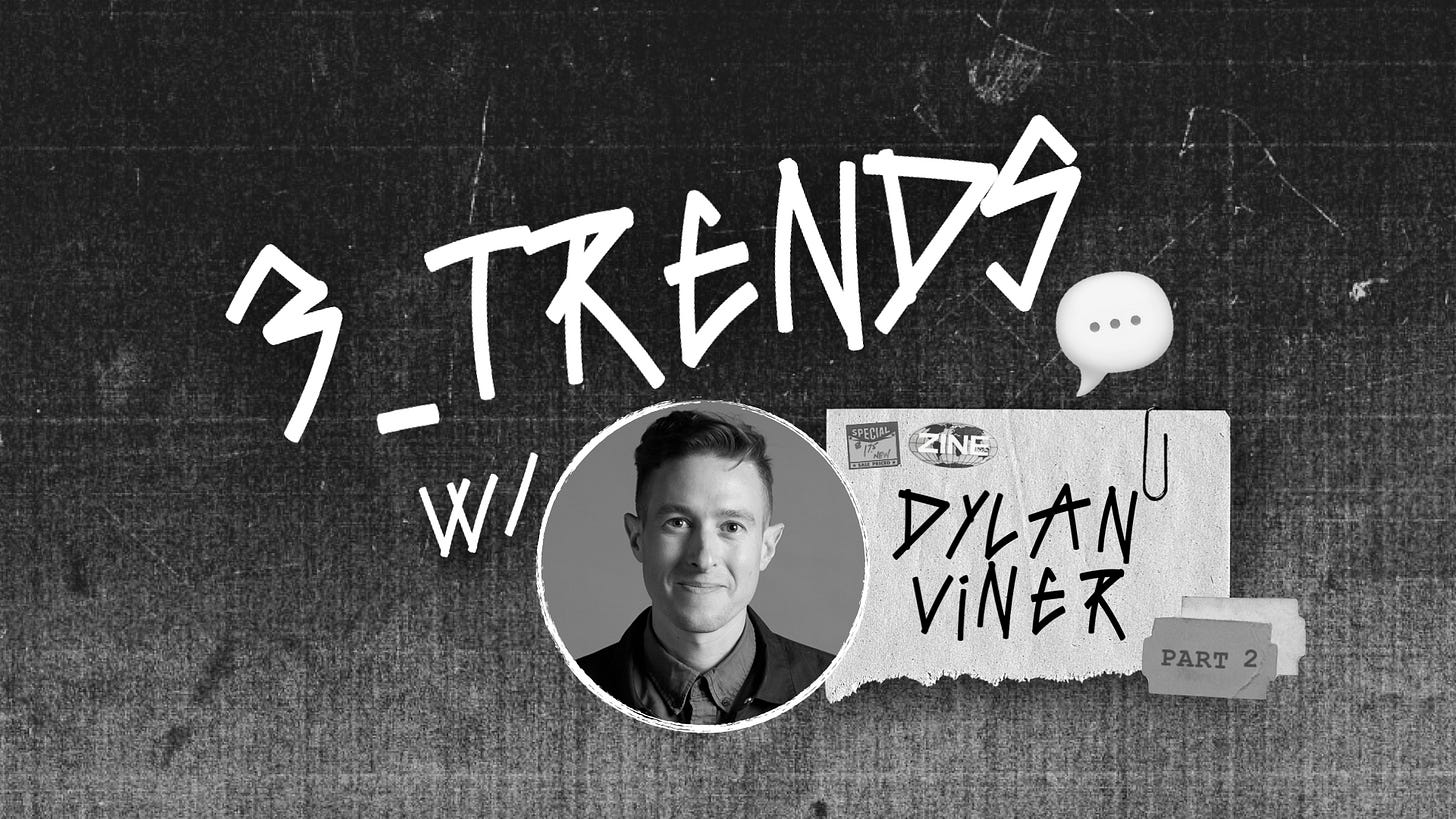3_TRENDS_Vol.19: Dylan Viner: Nihilistic Hedonism, Confused Narcissism + Future's Nostalgia
Vol.19
3_TRENDS is an interview series with the world's leading cultural researchers and thinkers, sharing their favorite overlooked trends.
Dylan’s first 3_TRENDS volume can be found here.
Dylan Viner (DV) is CSO and Partner at TRIPTK, a transformation consultancy that decodes and recodes culture for brands. Prior to joining TRIPTK, Dylan served as Deputy…


